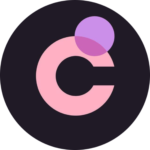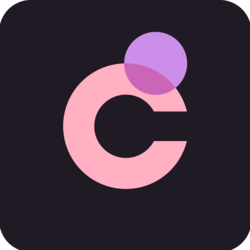Chromaway AB, a Swedish firm, created Chromia, an open-source, public blockchain. In May of this year, the Chroma token (CHR) was released. The Chromia blockchain is based on an older technology known as ‘Postchain,’ which was developed by Chromaway AB for corporate clients.
What is Chromia?
Chromia claims to be a relational blockchain platform that makes developing decentralized applications (dApps) simple. Relational databases power the contemporary world, such as social networks, banking, and the internet. And this technology makes data management simple since it is built on a mathematical basis with decades of optimization.
Chromia integrates relational databases with blockchain technology to provide dApps with a traditional database’s usability, power, and logic. Chromia may be utilized as a private, public, or hybrid blockchain, and developers can use the platform’s capabilities to construct various apps.
Chroma (CHR), the platform’s native token, is meant to power it and connect users, developers, and investors in a mutually beneficial relationship.
CHR can be used for staking, paying hosting costs, and other system-wide activities in addition to being a platform currency.
The Tech used in the development of Chromia
Chromia is built on the Postchain framework, developed to store blockchain data in a relational database. It is primarily written in the Kotlin programming language. It operates on the Java Virtual Machine, which is optimized for server use cases and has a vast library base. Chromia can now satisfy the demands of high-performance dApps, such as a one-second confirmation time, a transaction rate of at least 500 TPS per sidechain, and an input/output capacity of at least 100,000 updates and reads per second, thanks to this framework.
Chromia: roots and history
CEO Henrik Hjelte, COO Or Perelman, and CTO Alex Mizrahi co-founded Chromia. Colored Coins, a blockchain token platform, and Safebit, a Bitcoin wallet, were both established by members of the team earlier. 21M Capital, Arrington XRP Capital, and Neo Global Capital were among the project’s sponsors. All of these names are well-known in the blockchain field.
The creators started working on the technologies to create a publicly hosted application architecture that is fully matched with the demands of users in 2012. ChromaWay is a free and open-source software firm that is an early pioneer of blockchain 2.0 technology and provides a platform for smart contracts, issuing, and transferring digital assets. The team launched ChromaWay in 2014.
Finally, in 2018, Chromia was founded, a decentralized platform independent of ChromaWay.
How does Chromia work?
Chromia embeds a blockchain into a database and provides a lightweight software layer for voting and consensus. The existence of this layer results in the formation of nodes, which are dispersed across a number of different individuals. When someone requests data to be written, it is sent to one of the nodes that share it with the others. The nodes examine the request and, if they agree, the data is written to the blockchain and logged.
A relational database stores the blockchain data and application state, enabling flexibility, variety, and consistency. Chromia is therefore well suited for usage as a business blockchain as well as an independent public blockchain. Chromia may also be utilized as a Layer 2 to Ethereum, reducing the cost of development and transactions.
Rell, a fast and ubiquitous programming language invented by Chromia and based on SQL, allows developers to construct a wide range of applications.
How To Use Chromia
Many developers and companies have already utilized the Chromia platform to create dApps. Hedget, a decentralized crypto options tool, Lingon, a digital certificate platform, and My Neighbor Alice, a blockchain construction game, are all based on Chromia.
Within the Chromia economy, the CHR token serves as the basic platform currency; dApps can collect it as fees or use it as a reserve to anchor their own tokens. Decentralized applications (dApps) also use it to pay for hosting costs and compensate nodes. Chromia has also dedicated CHR token accounts for system-wide reasons, including the development pool, system node compensation pool, and ERC-20 token pegging.
Chromia Staking
Everyone may contribute to the network’s security by staking CHR. Staking allows users to engage in Chromia’s staking-required initiatives like governance experiments, provider stake delegation, and perhaps early access to applications and promotional events.
To withdraw staked tokens, you must wait at least two weeks.
Why choose Chromia?
Chromia sets itself apart from other blockchain systems by employing relational databases, which have decades of real-world industry experience in various sectors. The Rell programming language on the platform boasts of being simpler to learn and more efficient than other blockchain languages. It allows developers to code seven to ten times quicker by using fewer lines of code.
The Chromia Vault is a wallet that allows users to manage their tokens and dApps on the Chromia blockchain, while the Chromia Vault Single Sign-On is a unique feature that eliminates the need for users to enter passwords while maintaining security.






